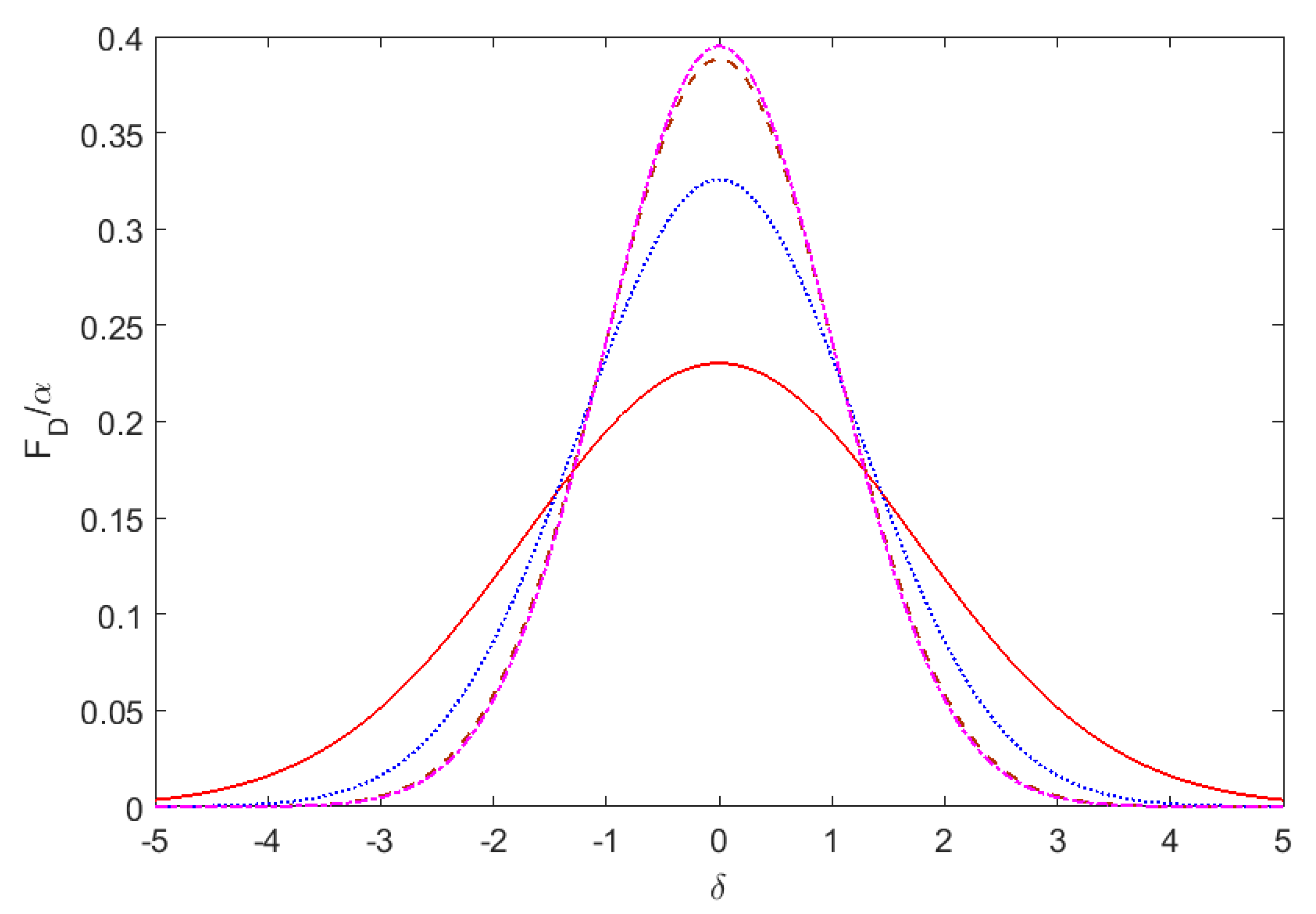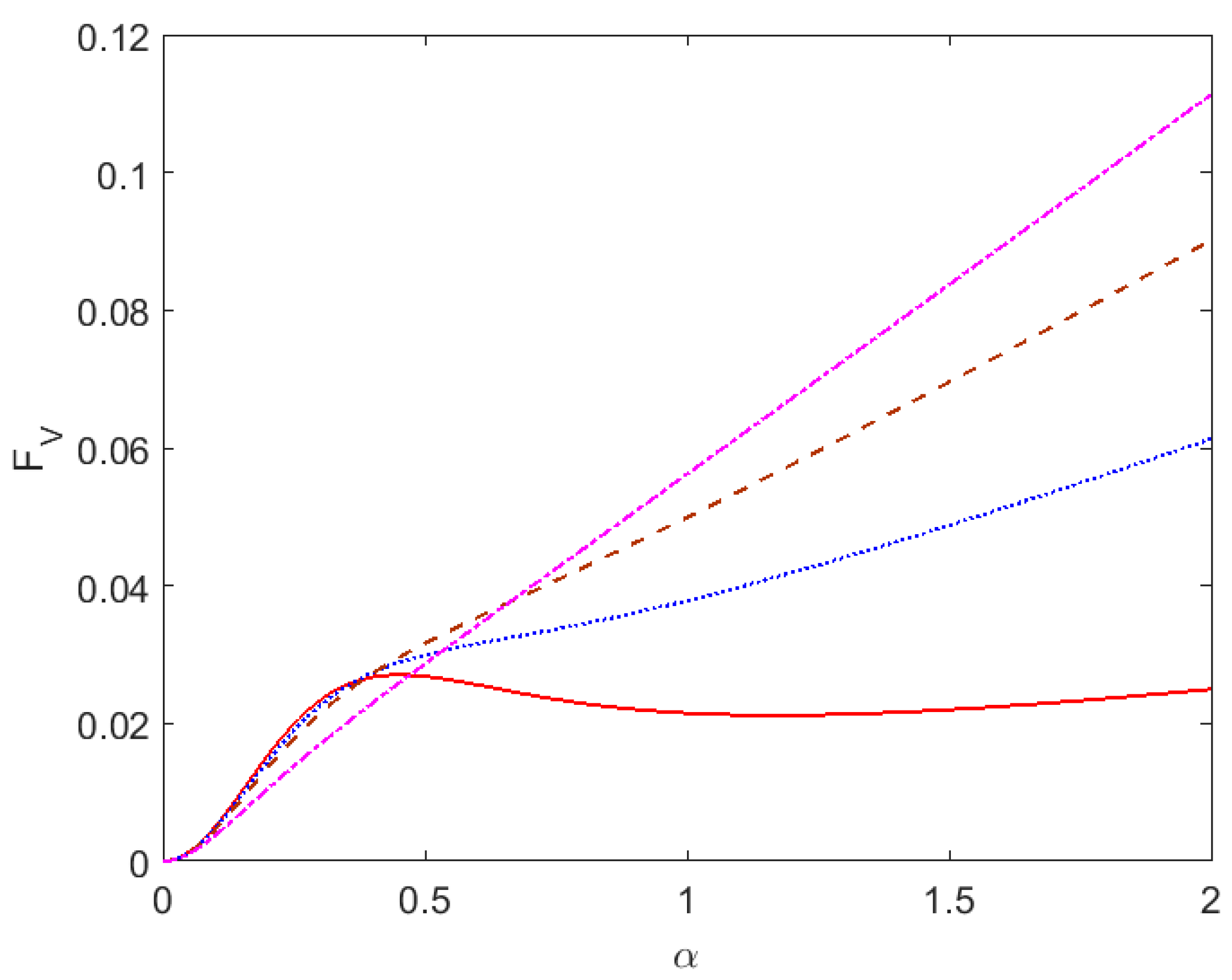1. Introduction
The progress in the generation of ultrashort electromagnetic pulses (USPs) [
1,
2,
3] means that it is important to consider their interaction with atomic systems in plasmas. One of the essential advantages of USPs is connected with their short wavelengths, which make it possible for them to excite atomic systems from ground states, in contrast with femtosecond laser pulses in visible spectral ranges.
The interaction of USPs with atomic systems is of great interest for plasma investigations. The long laser pulses in standard diagnostics (fluorescence schemes) usually deal with the excitation of radiative transitions between excited atomic states which belong to the visible spectral range. The contrast of the fluorescence signal in this case is rather small because the populations of excited atomic levels are not very different from one another under standard plasma conditions. At the same time, the carrier frequency of a USP is often in the ultraviolet or even X-ray spectral range, enabling the excitation of atoms and ions in plasmas from their ground states. In this case, the observed fluorescence signal grows by many orders of magnitude due to the large populations of ground states. This opens up new possibilities for plasma diagnostics (see the discussions in [
4]).
In this sense, the X-ray radiation of free electron lasers is of special interest, providing possibilities for both highly charged ion excitation from their ground states and for the tuning of laser frequencies [
1]. Moreover, the wide frequency spectra of USPs provide the possibility of USP radiation penetrating into optically dense media.
A specific USP results in the appearance of a new parameter in line broadening theory, namely the pulse duration; see also [
5,
6,
7]. This must be considered together with standard line shape parameters such as frequency detuning from atomic transition resonance [
8,
9]. Thus, one deals with a generalization of the standard broadening theory by introducing new line shapes which depend on both frequency and pulse duration. It is clear that for long pulses, the new line shapes make a smooth transition to the standard one, whereas for short pulses, absorption probabilities as nonlinear functions of pulse duration can be observed.
The USP can be used for plasma investigations both in X-ray and visible spectral ranges. The pulses provided by X-ray free electron lasers (XFEL) are useful for investigations of high temperature, dense plasmas where the radiative transitions in atomic systems such as highly charged ions belong to the X-ray spectral range. At the same time, a USP in the visible spectral range (HHG pulses) can be applied for investigations of low temperature plasmas, where radiative transitions in neutral atoms (for example, alkali atoms, etc.) are only in the visible spectral range. The expressions for radiative transition probabilities in this paper are expressed in terms of universal functions, enabling their application for both of the cases mentioned above. Moreover, such universal representation opens up the possibility of transferring the results of specific investigations to other conditions following the dimensionless parameters of the research.
The present paper is dedicated to the analysis of the absorption of USPs on atoms in plasmas, accounting for different broadening mechanisms, including the Stark broadening of the atomic resonant transition in terms of total absorption probability during the entire pulse action. Specific attention is devoted to the investigations of absorption probability transitions from the nonlinear to the standard linear absorption regime. This research is presented in terms of universal dimensionless parameters, making it possible to estimate the pulse duration effect on the absorption probabilities for different broadening mechanisms related to different plasma conditions.
This research is made within the frame of first-order perturbation theory with respect to pulse amplitude E
0. Thus, the absorption probability is proportional to the squared product of E
0 and pulse duration
τ. The probability is therefore quite different for XFEL and HHG pulses. A specific example is considered in [
10].
The structure of the paper is as follows:
Section 2 contains general formulas for USP absorption line shapes, presented in terms of universal broadening parameters;
Section 3 is devoted to the application of general study of the specific broadening mechanisms, namely Doppler, Voigt, Holtsmark and Rydberg spectra; and
Section 4 presents the conclusions.
2. General Formulas
The total absorption probability for laser pulses with a Gaussian envelope in dimensionless variables takes the form [
7]
where
is the spectral line shape of a radiative transition between atomic states. Here, dimensionless variables are introduced:
where ∆ is the spectral width of the line,
and
are the frequency and oscillator strength of the electron transition,
is the amplitude of electric field strength of the USP, and
and
are the carrier frequency and pulse duration. The dimensionless absorption probability
is given by the following expression:
This function describes the dependence of the absorption probability on pulse duration and carrier frequency in terms of dimensionless parameters
α and
δ. Note that
Thus, the function divided by parameter α presents the line shape of the USP absorption modified by finite pulse duration and becoming the standard one when the value of α goes to infinity.
It should be mentioned that the function integrated over detuning parameter δ is equal to unity.
The influence of pulse duration parameter on absorption probability for different mechanisms of line broadening in plasmas is considered below.
4. Conclusions
The calculations of absorption probabilities in the interaction of USPs with atomic systems in plasmas are made within the frame of perturbation theory regarding the amplitude of laser pulses. The results are expressed in terms of generalized line shapes of the absorption, which contain additional parameters related to pulse duration together with other standard parameters of the broadening theory. Specific broadening mechanisms relative to plasma conditions are considered: Doppler, Voigt, Holtsmark, and their combinations, as well as Stark line broadening of Rydberg atomic lines. The effects of pulse duration on absorption probabilities as well as their spectral dependence are investigated in detail. The specific interest of the research is the transition of the absorption probabilities from nonlinear time dependence at a small pulse duration to linear ones for long pulses depending on carrier frequency detuning from their frequency of transition. The research is presented in universal form, making applications for different atoms and plasma conditions possible.












